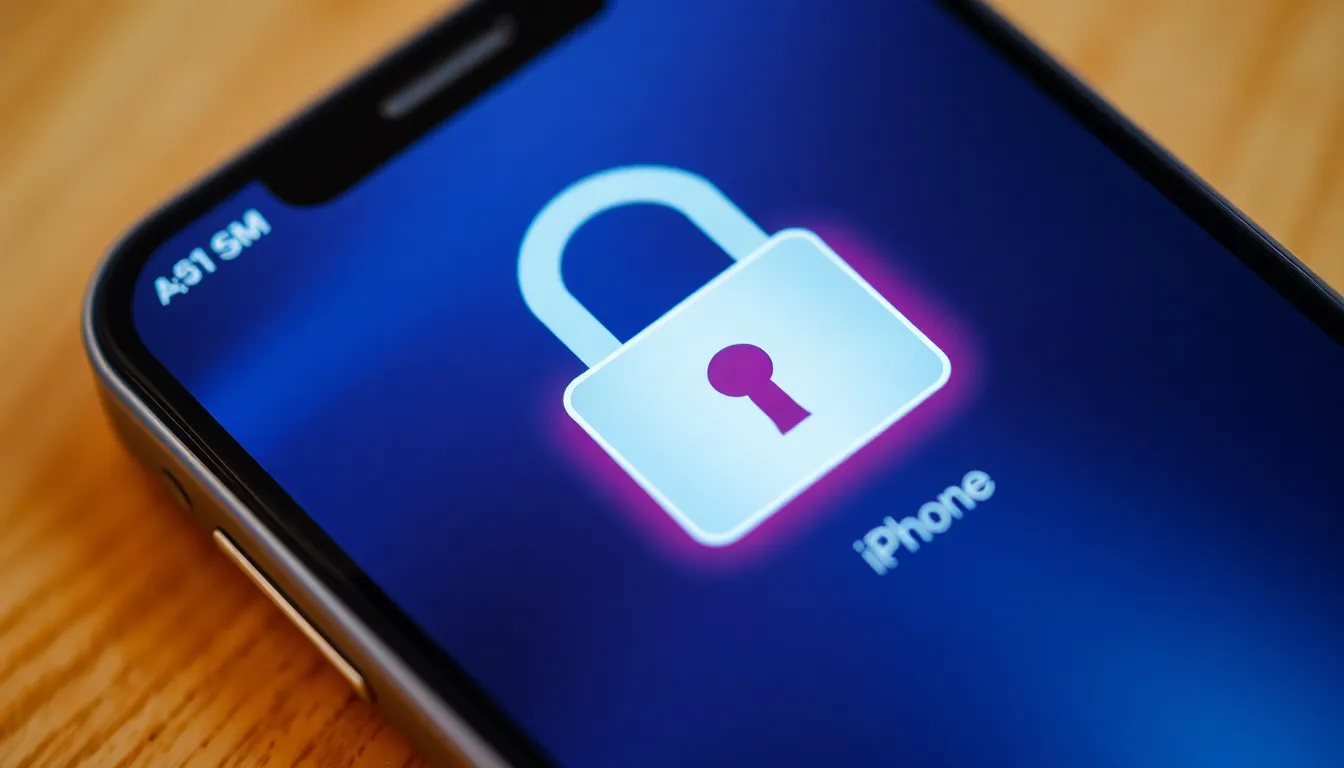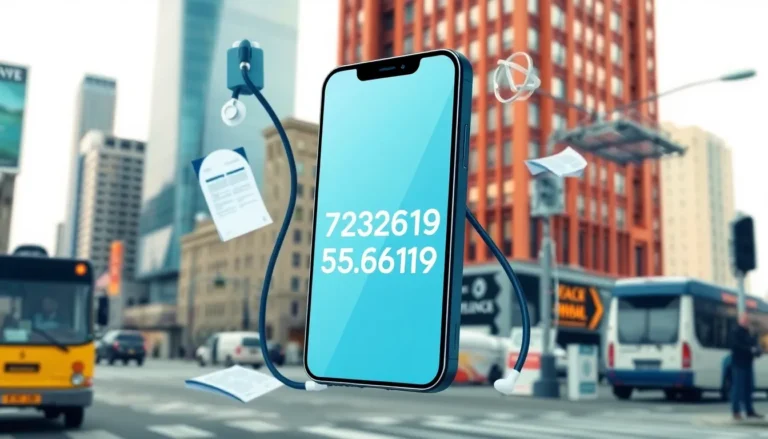In a world where online security feels as slippery as a bar of soap, SSL on iPhones steps in like a superhero in a spandex suit. But what exactly is SSL? It’s not just a fancy acronym to impress your tech-savvy friends; it’s the shield that protects your personal data while you browse, shop, or swipe right.
Imagine strolling through a digital marketplace, your sensitive information dangling like a piñata—without SSL, it’s a free-for-all for hackers. But with SSL, your data gets wrapped in an impenetrable cloak, ensuring your secrets stay safe from prying eyes. So, whether you’re checking your emails or making a bank transfer, understanding SSL on your iPhone isn’t just smart; it’s essential. Let’s dive into the nitty-gritty of this digital guardian and discover how it keeps your iPhone experience secure and sound.
Table of Contents
ToggleUnderstanding SSL on iPhone
SSL, or Secure Sockets Layer, serves as a critical tool for protecting data on iPhones. This technology secures connections between devices and servers, ensuring personal information remains private.
What Is SSL?
SSL is a protocol designed to encrypt online communications. Its primary role involves establishing secure links between web browsers and servers, shielding data from potential intruders. When users access websites with SSL, an HTTPS indicator appears in the URL, showcasing a secure connection. This encryption protects sensitive information such as credit card numbers and login credentials. Trust in SSL comes from certificates issued by trusted authorities, confirming that a website maintains secure practices.
How SSL Works on Mobile Devices
SSL functions seamlessly on mobile devices, enforcing encryption during communication. It initiates a “handshake” process, where the client and server exchange keys to establish a secure connection. Once this connection is set, SSL encrypts data transmitted between the two parties. Users can browse, shop, or use apps without concern for eavesdroppers. SSL technology remains consistent across devices, offering the same level of security whether on an iPhone or another mobile platform. This security ensures that personal information is safeguarded during online interactions.
Importance of SSL for Security

SSL plays a vital role in maintaining security for iPhone users. It protects sensitive data and ensures privacy during online activities.
Protecting User Data
User data security receives significant attention with SSL implementation. SSL encrypts information exchanged between an iPhone and a server, making it unreadable to unauthorized parties. Personal details such as passwords, contact information, and financial data remain secure. Hackers encounter challenges when attempting to intercept this encrypted information. Trust in SSL also stems from trusted certificates, which verify website authenticity. When iPhone users see the HTTPS indication, they can navigate online with confidence, knowing their data is safeguarded.
Enhancing Online Transactions
Online transactions benefit greatly from SSL protocols. E-commerce sites often use SSL to ensure that payment details are transmitted securely. This encryption safeguards credit card numbers and other financial information, reducing the risk of fraud. SSL also helps prevent man-in-the-middle attacks, where malicious entities might seize transaction data. With SSL in place, users can finalize purchases without fearing that their sensitive information will be compromised. Ultimately, SSL enhances the safety of online transactions, instilling user confidence and encouraging more secure shopping experiences.
Configuring SSL on iPhone
Configuring SSL on an iPhone ensures encrypted communications and secure browsing. Users can easily enable SSL to protect their personal data.
Steps to Enable SSL
- Open the Settings app.
- Scroll down and tap on Safari.
- Look for the Privacy & Security section.
- Turn on Prevent Cross-Site Tracking.
- Enable Block All Cookies if desired.
- Finally, check that Use SSL is activated.
These steps help maintain a secure browsing experience. Confirming these settings enhances transaction safety and data protection.
Common Issues and Troubleshooting
Users may encounter issues while using SSL on their iPhones. First, if websites don’t display the HTTPS indicator, try clearing Safari’s cache. Second, ensure the device’s date and time settings are accurate, as SSL relies on this information to verify connections. Third, consider updating the iOS version if any persistent problems occur. Lastly, if SSL certificates seem untrustworthy, checking with the website owner might aid in resolving concerns. These troubleshooting tips clarify common SSL-related problems.
Benefits of Using SSL on iPhone
Using SSL on iPhone enhances data security during online activities. Encrypted communications protect sensitive information, making it unreadable to unauthorized users. Secure connections reduce risks associated with data breaches, ensuring personal details remain confidential.
Confidence in online shopping increases significantly when SSL is in place. Payment details remain secure, which minimizes potential fraud and enhances user trust. Browsing experiences improve as users feel reassured their information is safeguarded while accessing various sites and applications.
SSL also prevents man-in-the-middle attacks, a common cyber threat. Connections established through SSL remain secure against eavesdropping, allowing users to complete transactions without worry. Trustworthiness is reinforced by SSL certificates issued by recognized authorities, signaling a commitment to data protection.
Adjusting settings to enable SSL proves simple on an iPhone. Users can enhance security measures within Safari, ensuring encrypted communications across numerous websites. Troubleshooting SSL-related issues often involves straightforward steps, such as clearing cache or verifying date and time settings.
Privacy gained from SSL extends beyond shopping. Everyday browsing becomes safer, allowing users to share information without fear of interception. Knowledge of SSL’s role equips users with the tools needed for a secure online experience.
Understanding SSL is essential for iPhone users who prioritize their online security. This technology not only protects sensitive data during transactions but also enhances overall browsing safety. By enabling SSL, users can confidently engage in online shopping and share personal information without the fear of interception.
With simple adjustments in Safari settings, iPhone users can ensure their communications remain encrypted and secure. The benefits of SSL extend beyond e-commerce, fostering a safer online environment for all activities. Embracing SSL empowers users to navigate the digital landscape with peace of mind, knowing their privacy is well-guarded.






